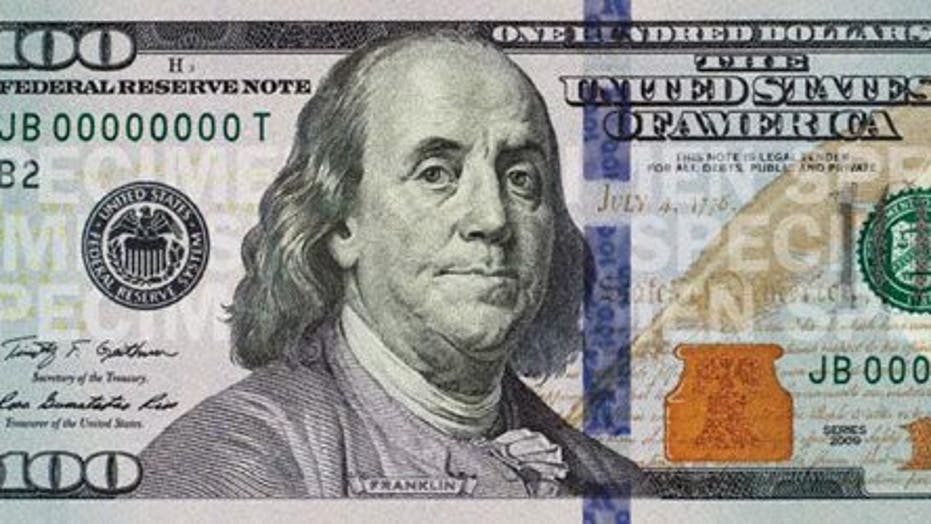The Federal Reserve is rolling out new Benjamins tomorrow.
A hundred years after the first $100 bill was issued in 1914, the banknotes are receiving a much-needed makeover in an effort to thwart sophisticated counterfeiters -- after overcoming "mashing" printing issues that led the Feds to shred more than 30 million of the bills in 2012.
"The $100 is the highest value denomination that we issue, and it circulates broadly around the world," assistant director for cash at the Federal Reserve Board Michael Lambert said in a 2010 press release. "Therefore, we took the necessary time to develop advanced security features that are easy for the public to use in everyday transactions, but difficult for counterfeiters to replicate."
[pullquote]
The newly designed bills will be made of a paper blend that is difficult to reproduce and the number "100" will shift from copper to green. In addition, the bills will feature a three-dimensional blue security ribbon with images that appear to move when the note is tilted and a copper inkwell with a holographic bell that changes color when tilted.
"The advanced security features we've included in the new $100 note will hinder potential counterfeiters from producing high-quality fakes that can deceive consumers and merchants," director of the Treasury's bureau of engraving and printing Larry R. Felix announced in the same press release. "Protect yourself -- it only takes a few seconds to check the new $100 note and know it's real."
Change to the image of America's Founding Father on the bill is minor; part of the Declaration of Independence was added to Franklin's left shoulder as well more texture to his collar.
"It is still Benjamin Franklin and still easily recognized," Lambert said, according to The Daily Beast. "And that's really important to global users, that they recognize the Benjamins as the $100 note."
The Federal Reserve estimates that at any given time, one-half of $100 bills are in circulation abroad, making the banknotes of the country's largest exports.
Those with lots of previously printed $100 bills should not fear; when the clock strikes midnight and the new bills begin to circulate, existing Benjamins continue to be legal. Over time, banks collect the older bills and exchange them for the new ones.

